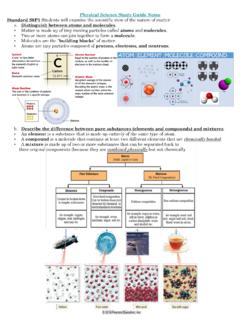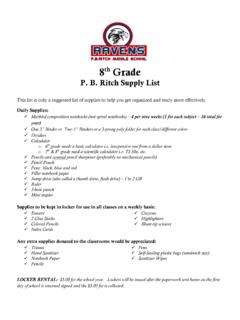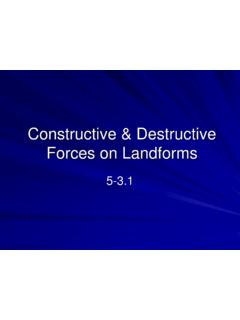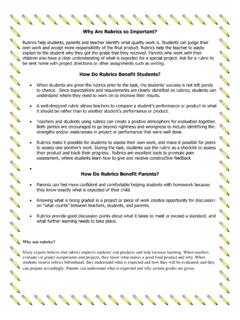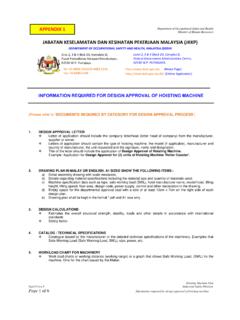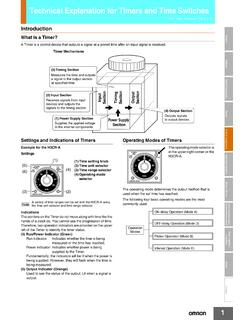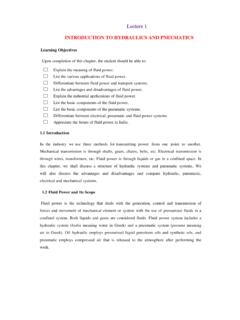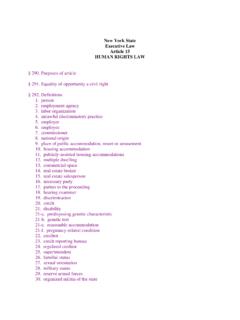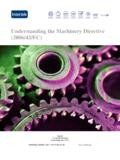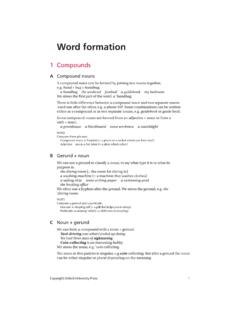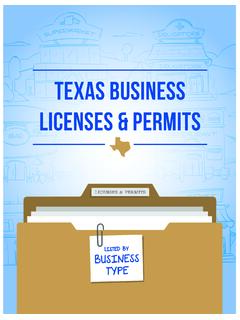Transcription of AP Physics 1 Investigation 3: Circular Motion
1 77AP Physics 1 INVESTIGATIONSAP Physics 1 Investigation 3: Circular MotionHow do you determine the period of a conical pendulum?Central ChallengeIn this Investigation , students use a toy that executes Motion in a conical pendulum to study Circular Motion . Given only a meterstick and a stopwatch, they must design a procedure and make measurements to predict the period of Motion of the conical pendulum. BackgroundA conical pendulum consists of an object moving in uniform Circular Motion at the end of a string of negligible mass (see Figure 1). A free-body diagram of the object is shown in Figure 2. represents the tension in the string and the gravitational force on the object is where m is the object s mass and g is the acceleration due to gravity. Figure 1 Figure 2 The Circular Motion of the object is in the horizontal plane, so the horizontal component of the tension is serving as the centripetal force. Since there is no vertical Motion of the object, the vertical component of the tension is equal to the gravitational force on the object.
2 In equation form: Return to Table of Contents 2015 The College BoardAP Physics 1 INVESTIGATIONS78AP Physics 1 Investigation 3where R is the radius of the object s Motion , v is the speed, and is the angle the string makes with the vertical, as shown in Figure 1. Combining these equations we get: The speed of an object in Circular Motion is given by where T is the period of the Circular Motion . Substituting this relationship into the equation above and rearranging we get .Thus, by measuring only lengths such as L and R (see Figure 1), and using them to calculate the angle from the vertical, students can predict the period of a conical pendulum. [note: L is the length of the pendulum, as measured from the point of attachment of the string to the center of mass of the object at the end of the pendulum (assuming the string has negligible mass), and R is measured from the center of the circle to the center of mass of the object.]Real-World ApplicationThere are many real-world applications of Circular Motion dealing with interchanges, intersections, and driving a car in general.
3 You can talk about various amusement park rides as well roller coasters deal heavily with Circular Motion . The swing ride is an example of a conical pendulum in which the riders sit in swings and move in Circular Motion around a central support structure (see Figure 3). Other rides, such as the rotor ride, Enterprise wheel, and Ferris wheel, spin the rider in Circular Motion either horizontally or vertically. NASA uses Circular Motion in a centrifuge to simulate the high g-forces on astronauts in flight. Medical equipment such as the centrifuge use Circular Motion principles to separate out components in test tubes. Figure 3 Return to Table of Contents 2015 The College Board79AP Physics 1 INVESTIGATIONSC ircular MotionInquiry Overview This Investigation is a guided inquiry in which students make measurements with a meterstick and use them to predict the period of a self-propelled mass, such as a flying airplane (or flying pig or cow), that moves like a conical pendulum. This is a new twist on what is a familiar lab (see Circular Motion Studies with a Toy Airplane in Supplemental Resources).
4 As part of their experimental design, students should also plan to make multiple measurements to determine or verify the relationship between the length of the pendulum and the angle the string makes with the vertical as the object executes Circular Motion . They can vary the length and plot graphs of period vs. length, speed vs. length, and angle vs. length, and compare the graphical results to the theoretical results derived using Newton s second law. Connections to the AP Physics 1 Curriculum FrameworkBig Idea 3 The interactions of an object with other objects can be described by UnderstandingLearning Classically, the acceleration of an object interacting with otherobjects can be predicted by using . The student is able to predict the Motion of an object subject to forces exerted by several objects using an application of Newton s second law in a variety of physical situations with acceleration in one dimension. (Science Practice ) The student is able to design a plan to collect and analyze data for Motion (static, constant, or accelerating) from force measurements and carry out an analysis to determine the relationship between the net force and the vector sum of the individual forces.
5 (Science Practices and ) The student is able to create and use free-body diagrams to analyze physical situations to solve problems with Motion qualitatively and quantitatively. (Science Practices , , and )3E A force exerted on an object can change the kinetic energy of the The student is able to use force and velocity vectors to determine qualitatively or quantitatively the net force exerted on an object and qualitatively whether kinetic energy of that object would increase, decrease, or remain unchanged. (Science Practices and )Return to Table of Contents 2015 The College BoardAP Physics 1 INVESTIGATIONS80AP Physics 1 Investigation 3 Big Idea 4 Interactions between systems can result in changes in those UnderstandingLearning The acceleration of the center of mass of a system is related to the net force exerted on the system, where . : The student is able to make predictions about the Motion of a system based on the fact that acceleration is equal to the change in velocity per unit time, and velocity is equal to the change in position per unit time.
6 (Science Practice ) : The student is able to apply Newton s second law to systems to calculate the change in the center-of-mass velocity when an external force is exerted on the system. (Science Practices and )[note: In addition to those listed in the learning objectives above, Science Practice is also addressed in this Investigation .]Skills and Practices Taught/Emphasized in This InvestigationScience The student can create representations and models of natural or man-made phenomena and systems in the draw free-body diagrams of the object as it executes Circular Motion . The student can use representations and models to analyze situations or solve problems qualitatively and use the free-body diagram and Newton s second law to write equations related to the Motion of the object. The student can apply mathematical routines to quantities that describe natural use equations derived from Newton s second law to analyze the Motion of the The student can design a plan for collecting data to answer a particular scientific design a plan to use only length measurements to predict the period of a conical pendulum.
7 The student can collect data to answer a particular scientific question. Students make measurements of various lengths associated with the Motion of the object as it moves in a circle. The student can analyze data to identify patterns or relationshipsStudents apply mathematical routines to choose data that will allow them to predict the period of the object s Motion . Students analyze the uncertainty in their measurements and make adjustments to reduce these uncertainties where possible. The student can make claims and predictions about natural phenomena based on scientific theories and use Newton s second law and length measurements to predict the period of an object moving in a circle. [note: Students should be keeping artifacts (lab notebook, portfolio, etc.) that may be used as evidence when trying to get lab credit at some institutions.]Return to Table of Contents 2015 The College Board81AP Physics 1 INVESTIGATIONSC ircular MotionEquipment and Materials Per lab group (two to four students): Battery-operated toy airplane (or flying pig or cow see Figure 4) with new AA cells installed Meterstick Stopwatch (for verification only) (Optional) Extra sets of AA cells for the plane that have been drained so they are not at full operating potential difference.
8 [note: The cells in the sets should be less than V each under load, but each cell in the set of two should be at the same potential.] (Optional) Multimeter to test electric potential difference of each cell[note: Ceiling-suspended, battery-operated airplanes (9-inch wingspan, two AA batteries required) can be obtained from The Physics Toolbox see Supplemental Resources.] Figure 4 Timing and Length of Investigation Teacher Preparation/Set-up: 15 minutes The toys need to be suspended so they can execute Circular Motion extend them from the ceiling or from a tall stick or pole. You should do this setup prior to the lab. [note: Strong hooked magnets can be attached to ceiling metal cross grids to support the swivel hook that comes with the flying toy. Avoid attaching the devices to the ceiling on or at the corners of light fixtures or on sprinkler system apparatus.] Prelab: 10 minutes To demonstrate the conical pendulum, put students in groups and pose the problems to to Table of Contents 2015 The College BoardAP Physics 1 INVESTIGATIONS82AP Physics 1 Investigation 3 Student Investigation : 45 60 minutes Students design a plan to make measurements, and make the measurements and calculate the period.
9 Postlab Discussion: 15 30 minutes Students present their results, and share the method they used to predict the period. Total Time: 2 hoursSafety All general safety guidelines should be observed. In addition, some toy airplanes have small plastic propellers that rotate rapidly; students must take care to keep their fingers away from the propellers. Students should also not walk around too much to avoid getting hit in the head by a conical pendulum. Students should be wearing safety goggles on the off-chance that a string prevent students from climbing up on tables or chairs to change ceiling connections, it may be wise to preinstall multiple devices with new cells and with different lengths; then students can take multiple trials by simply moving to a different pendulum (assuming they all are constructed similarly).Preparation and PrelabThis lab is best implemented at the end of the Circular Motion unit and used as a review. Students should already have solved many problems involving Circular Motion .
10 They should be able to draw a free-body diagram and identify the radius of an object s for students how to start the toy airplane flying in Circular Motion . All that remains after that is to present them with this task: using only a meterstick, make measurements that allow for calculation of the period of the plane s Motion . Students should not be shown the derivation above in the Background section; rather, they should be required to complete it themselves and decide what measurements to make. The Investigation Students should work in groups of two to four. The number of students per group depends upon how many toy airplanes are available or the time available for groups to rotate through using the setup. Each group should have direct access to a device. Each group designs and executes a plan for taking measurements with a meterstick to calculate the period of a conical pendulum. They then measure the period with a stopwatch and compare the stopwatch measurement to their prediction.


